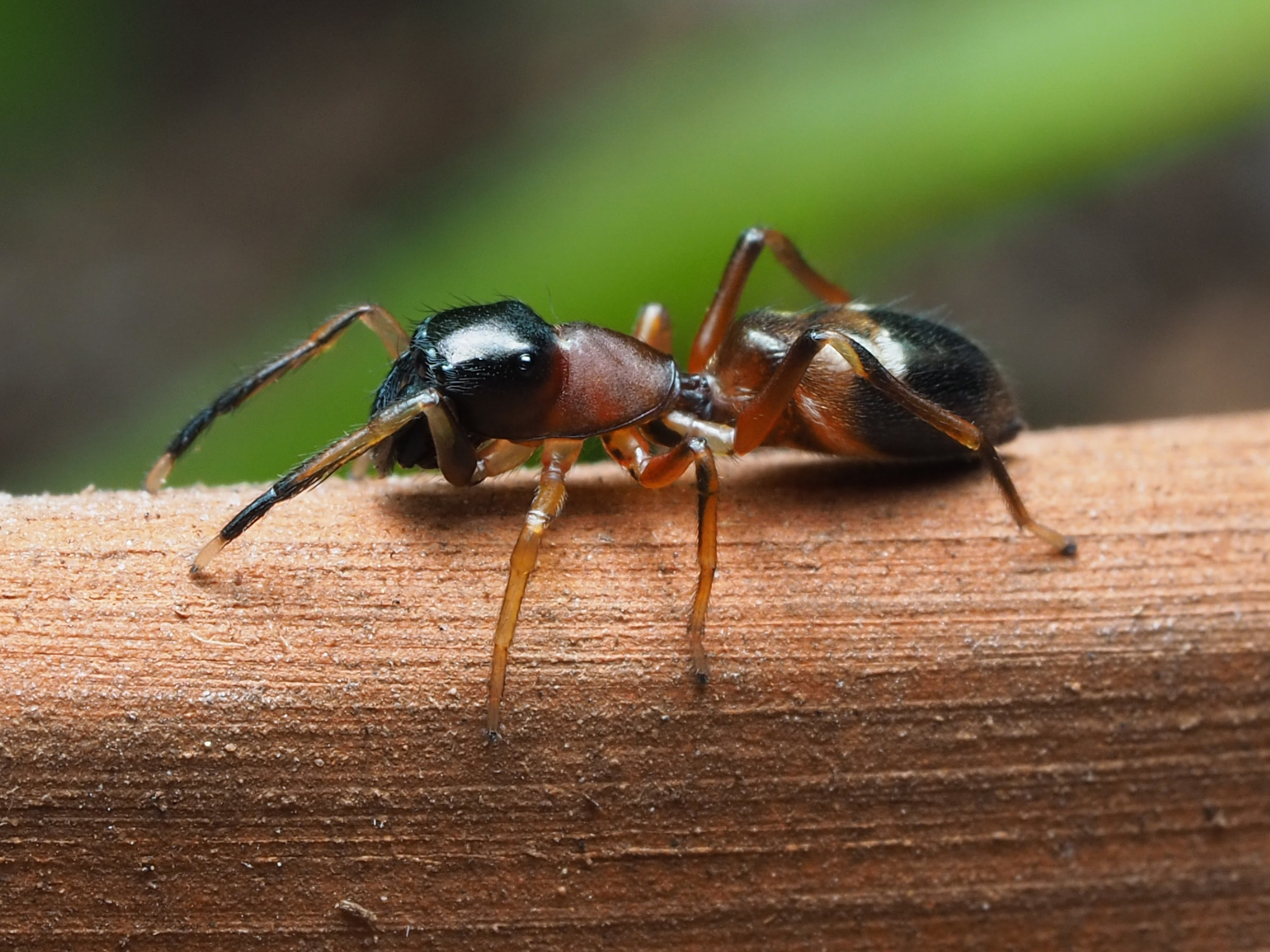In the Disney musical The Aristocats, the scatting cat voiced by Scatman Crothers makes an ironclad argument in the form of a song, namely "Ev'rybody Wants to Be a Cat." This argument might hold water for vertebrates, but in the world of insects and spiders, evolution has chosen another bodily ideal. Here, everybody wants to be an ant. Many arthropods that are not ants, biologically speaking, mimic them in a phenomenon that happens so frequently it has its own name: myrmecomorphomania. In fact, ant mimicry has evolved independently at least 70 times in arthropods, resulting in more than 2,000 species that have eschewed their evolutionary origins to resemble the small, stoic marchers.
The benefits of antdom are manifold: Ants are often unpalatable prey that will defend themselves aggressively with chemical and mechanical weapons, so looking like one might save your life. This particular approach is known as Batesian mimicry, in which harmless, tasty species resemble their more unpalatable doppelgängers. "If you look like an ant, you can wander around out in the open, unlike most spiders and insects which have to sneak around so they don’t get eaten," said Jim McLean, a researcher at Macquarie University in Australia.
But with so many wannabe ants out there, not every mimic's disguise reaches the same level of artistry. Many non-ants that mimic ants look nearly indistinguishable from their models. Consider the immature broad-headed bug in the genus Alydid, which looks eerily similar to an Asian weaver ant, from its honey-colored body to the olive hue of its abdomen. Similarly, the spider Myrmarachne macleayana is as black, bumpy, and sleek as an Australian weaver ant.
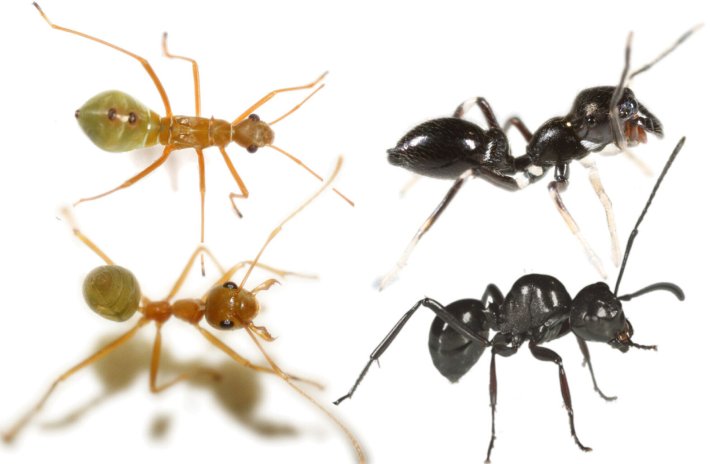
Top right: the ant-mimicking spider Myrmarachne macleayana. Below, the Australian weaver ant.
Mimicry is often invoked as an obvious example of natural selection, in which the harmless mimic experiences selection to bear a closer and closer resemblance to their nastier model. Surely a stick insect with only a glancing resemblance to a stick will be found out and eaten, swiftly. But many mimics are poor lookalikes and yet have stood the test of evolutionary time. Some insects and spiders merely match their ant idols in color or another negligible gesture toward ant-dom—the evolutionary equivalent of a last-minute Halloween costume. Consider the leafhopper Eurymela rubrolimbata, which technically has a gilded rear like the ant species it lives alongside. But the golden bum is where the similarities end. "Despite being a terrible mimic, it almost certainly is a mimic, since it lives amongst its models," McLean said.
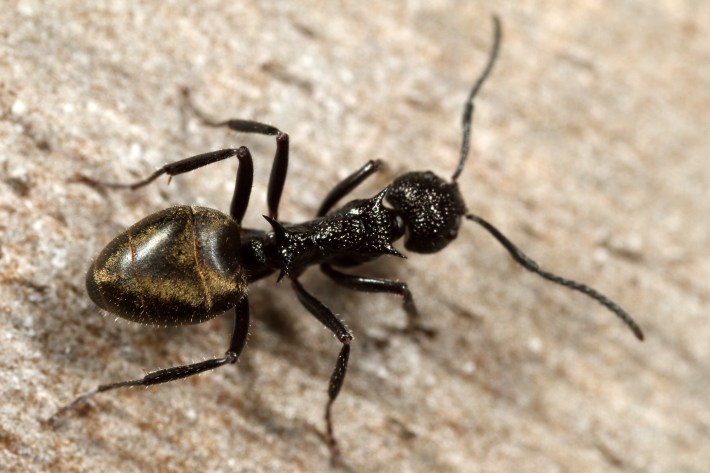

Why are there so many terrible mimics crawling around in such apparent success? Scientists have offered a number of theories that try to explain imperfect impersonation. One possible answer is evolutionary constraint: The idea that imperfect mimics lack the genetic variability to incontrovertibly pass as ants. In a new paper published in the journal Biology Letters, McLean and colleagues put this idea to the test. They compared the body shape of ant-mimicking insects and spiders to see which group passed better as ants. The researchers hypothesized that spiders, which are not insects but arachnids and therefore only distantly related to ants, would be more likely to encounter constraints than other insects. But their results revealed spiders can mimic ants just as well as the ants' own insect brethren.
David Kikuchi, an evolutionary biologist at Oregon State University who was not involved with the research, said he was surprised by the results. "For an insect to change its bauplan (its body shape) to resemble an ant is a pretty crazy transformation, so I anticipated that insects (which include the ants) would manage it more easily," Kikuchi wrote in an email. The spiders were undaunted by their dissimilitude, evolutionarily speaking. "The study proves once again how surprisingly well arthropods can adapt in shape and appearance with enough time and selective pressure," Enrico Schifani, a doctoral student at the University of Parma who was not involved with the research, wrote in an email.
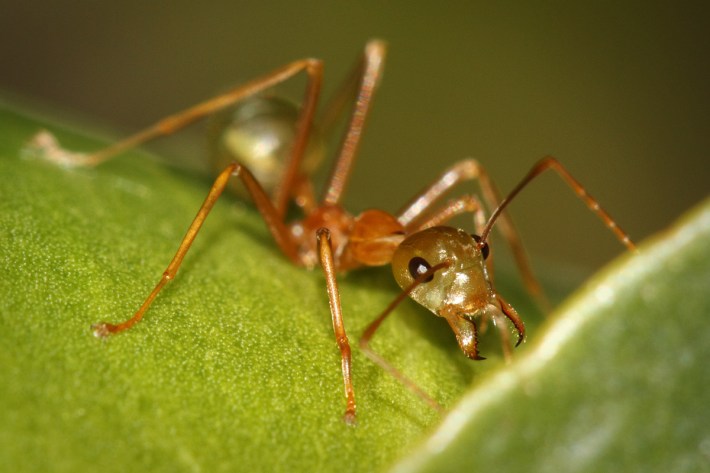

The new paper is part of a larger project investigating the many less-than-perfect ant mimics of Australia. "There is a huge diversity in Australian bugs and spiders that mimic ants," Marie Herberstein, one of the paper's authors who is a behavioral ecologist at Macquarie University, wrote in an email. The researchers collected specimens of ant mimics, photographed them, and then used a technique called geometric morphometrics to compare their shapes to a single, platonic ant body.
The researchers predicted the spiders would come up short. After all, spiders have just two chunky body parts and eight legs, whereas insects including ants have three more slender body parts and six legs. But the analysis found that spiders and insects both exhibited a range of accuracy, with excellent and mediocre mimics in both groups. The researchers compared the critters' body shapes both from above and from the side. From a bird's eye view, the spiders were generally as ant-like as the insects. From the side, the spiders were overall less ant-like than the insects, but the best spider mimics were nearly as good as the best insect mimics.

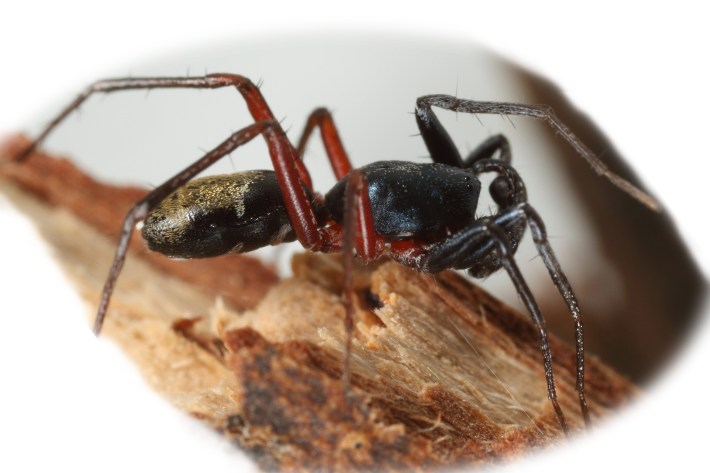
Both of these results ruled out the theory that evolutionary constraints could explain these poor mimics. If natural selection were to "weed out" the poor mimics, there would not be such a wide range of accuracy in them. "Our findings suggest that most constraints can be overcome if selection is sufficiently strong, and apply to evolution in general, not just imperfect mimicry," McLean said. And the comparisons between bird's eye and side views offers some insight into which predators might be the reason behind all this mimicry, Schifani suggested. After all, a predator like a bird would be searching for ant-sized prey from above, not eye to eye. "The strategy of the same mimic can sometimes be defined differently based on the predator's perspective," he said. In other words, a mimic can be far from perfect and survive just fine. After all, even a C- is a passing grade.
The researchers also identified several alleged ant mimics that scored so poorly that they might not actually be mimicking an ant's body shape at all. For example the jumping spider Apricia jovialis appears to have made no evolutionary effort to look like an ant at all, despite mimicking the color of its ant model. But perhaps color, for some predators, is enough of a deterrent. "It would be neat to see a follow up that examines what makes a 'good' mimic in the eye of the beholding predator," Kikuchi said.
And photos never tell the full story. The researchers have also studied other types of mimicry. "Perhaps one of the more unusual types of mimicry is movement mimicry, where ant mimics walk along a meandering path like ants, which is unusual for spiders," McLean said. One species of jumping spider, Synemosyna formica, do not jump, because ants do not jump. And when the spiders stop moving, they wave their two front legs as if to pretend they have an ant's antennae.
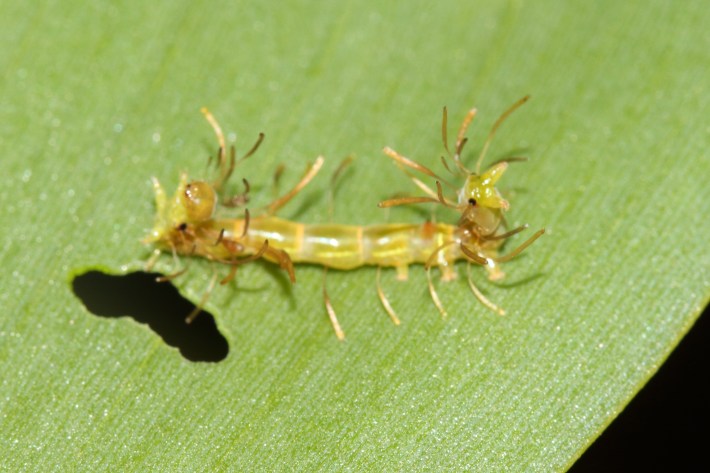
David Outomuro, a behavioral ecologist at the University of Pittsburgh who studies S. formica, pointed out that understanding how these predators perceive a mimic's body shape, color, and movement is key to understanding whether their mimicry is successful. "I think imperfect mimicry is especially interesting partly because we look at it from a human perspective, which is biased," he wrote in an email. "A mimicry case might look 'imperfect' to a human eye but, are we the intended receivers of that mimicry signal?" Outomuro asked.
We might not be fooled by the fine golden rump of the leafhopper Eurymela, which, to our human eyes, does not even remotely resemble an ant. But we are not, I assume, interested in gobbling up Eurymela on a regular basis. Perhaps the bug's golden behind and rapid, ant-like movements are more than enough to deceive whatever snapping jaws lurk above. "That mimicry case might be just fine or even perfect for the eye of a predator or another species, whose color, resolution, and motion perception are simply different to ours," Outomuro said. "Mimicry evolves to match those properties, not ours."
